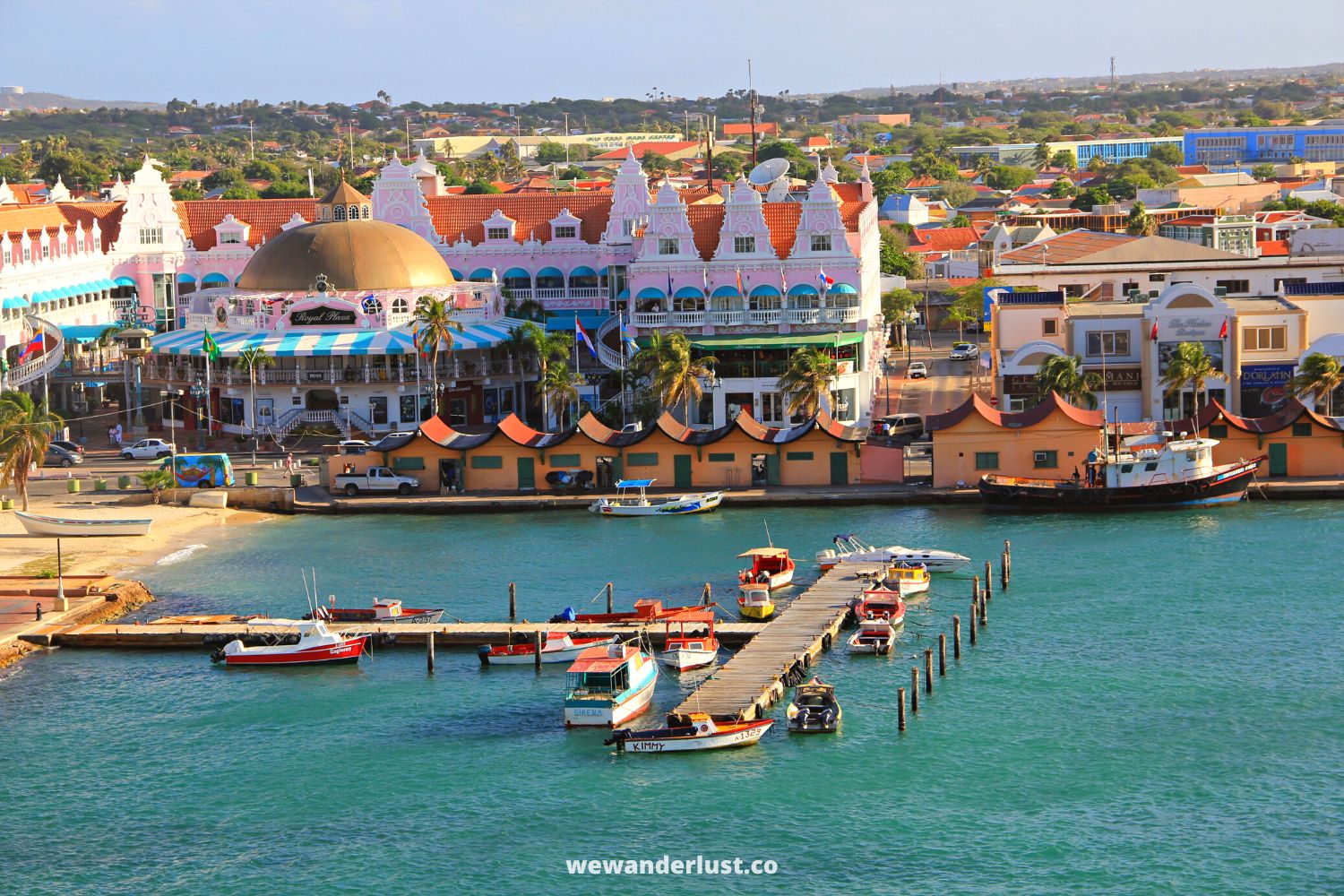Despite being only 20 by 6 miles in size, Aruba has a wide variety of attractions, from a beautiful bird sanctuary to a bizarre, boulder-strewn desert landscape. The concierge or local help can give you useful directions to these difficult attractions.
Arikok National Park
Arikok National Park, covering 22.7% of Aruba’s land, is a protected habitat for numerous wildlife species. The Visitor’s Center offers information on various sites within the park, including Daimari, a 17th-century coconut plantation, and the partially restored Aruban farmstead at the foot of Arikok Hill. Boca Prins is a north-coast beach with stunning dunes shaped by powerful winds. The Natural Pool protects a pool of water from the rough sea, known as Cura di Tortuga. Yamanota, the highest mountain on the island, offers a unique view of two coasts. Caves Guadirikiri and Fontein are famous for their natural light and Amerindian drawings. Hofi Fontein, the only freshwater spring on Aruba’s north coast, features a museum with animal, plant, and colonial-life displays.
Bubali Bird Sanctuary
Over 220 native and migratory species visit Aruba each year thanks to the Bubali Bird Sanctuary, which was founded in 1973. It is situated in a high-rise hotel area and has two man-made lakes as well as an observation tower where birdwatchers can see a variety of species, including blue and green herons as well as several duck species.
Hooiberg
Hikers can enjoy a panoramic view from the top of the 180-meter-tall Hooiberg, which has more than 550 steps. The hike is pleasurable because it is shared with wild goats, parakeets, and colorful reptiles.
California Dunes
A well-known shipwreck inspired the name of the California Dunes, a protected nature reserve in Hudishibana. In addition to offering a place to view waves and the adjacent California Lighthouse, the immaculate dunes soften the surrounding limestone scenery and make for an attractive backdrop.
Mondi & Cunucu
Mondi, in Aruba, is a rough desert region with stones, cactus groves, and woody scrub. Snakes, birds, lizards, and wild goats are just a few of the animals that call it home. In the past, farmers would build cunucus to raise sheep, goats, and donkeys while growing crops including beans, corn, millet, peanuts, and cucumbers.
Natural Bridges
Eight natural bridges have been created by Aruba’s limestone cliffs over thousands of years, with the Natural Bridge near Andicuri Beach being the largest. Despite collapsing in 2005, the Natural Bridge is still a popular tourist destination, and the Baby Bridge, which is still standing, is also well worth a look.
Rock Formations
Diorite boulders can be found throughout the island, but Casibari Boulders and Ayo Rock Formations are two that stand out. Indian rock carvings on these monolithic stones represent the importance of the island’s first settlers.
Seroe Colorado & Colorado Point
A Lago colony for American refinery workers and their families previously existed at Seroe Colorado, next to the refinery on Aruba. Only a handful of individuals now reside in bungalows that have views of Baby Beach and Roger’s Beach. A road goes to Colorado Point, the highest point in Aruba, where a lighthouse is located, the Seroe Colorado Natural Bridge, turbulent water brought on by merging ocean currents, and hikers may be seen. If you want to see more Scenery and attractions in Aruba then, book Detroit to Aruba flights and create unforgettable memories.

